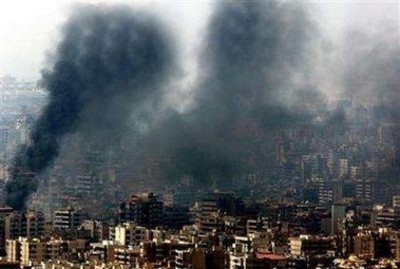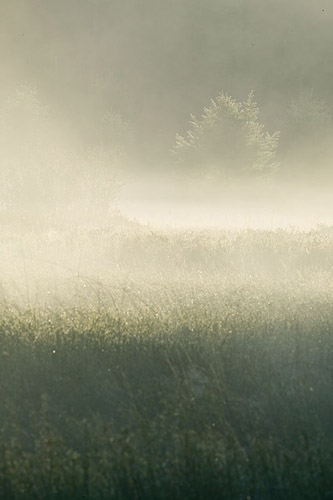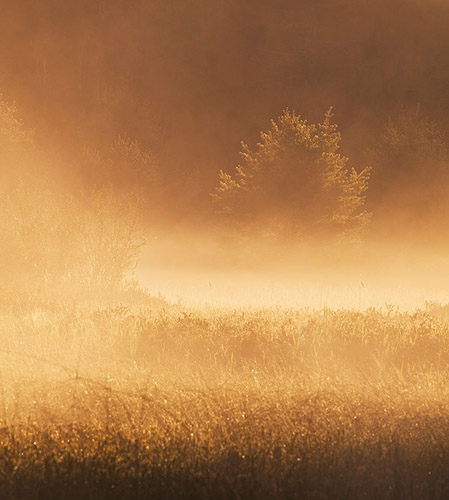I have never understood why photography is essentially the only artistic medium in which people seem to expect literal, factual interpretations of a subject. It is not at all unusual for someone, after looking at and seemingly enjoying a photographic print, to turn around and question if there has been 'manipulation' of the image because of the intensity of color or contrast, the perspective of a particular lens, or the use of shutter speeds that provide an unexpected appearance. Unfortunately, many of these comments are made in a derogatory fashion; there is seemingly no artistic vision or expertise involved if there were ‘adjustments’ that were made……it is as if to say “aha, once you are allowed to make adjustments I could have done that as well”, and therefore the perceived ‘value’ (and I am not talking about monetary value here) is lessened.
I simply don’t get it! I have never heard anyone complain to a painter that their work wasn’t good because they painted the sky bluer than it was on that particular day. No one tells a writer that something couldn't have looked as they described it. Sure, people may not like the painter's or writer's style, but that is quite different from not liking an artist’s work because it does not portray reality.
As an aside, the whole situation reminds me of a famous story regarding Picasso, which goes something like this (who even knows if it is true at this point). A tall patron asked Picasso why he portrayed people the way he did, despite the fact that ‘they don’t really have angles like that’. Picasso reportedly asked him if he had a photograph of his wife with him and asked to see it. The person did and showed it to Picasso. Picasso then took his thumb and forefinger and, in an animated fashion, used them to measure the size of the woman’s head in the photograph. He then held his now separated fingers up to the light and said to the tall patron, “How odd, your marrying a woman with such a small head.” Point well made.
The issues and concerns regarding manipulation have certainly ‘gotten worse’ in the digital era, where anyone can cut out their bosses head and place it on a monkey’s body. Clearly, however, ‘manipulation’ occurred long before the digital age by making choices as simple as deciding what focal length lens to use or even what type of film to load into the camera. For more complex manipulation using film, one need look no further than the type of magnificent work Jerry Uelsmann does today using ‘only’ film and the darkroom.

“Leaves And Falls”
An example of a short focal length induced change in perspective. In reality, the pool of leaves was smaller and the waterfall closer than the image would lead the viewer to believe.
What it seems to essentially boil down to, at least in my mind, is that most people expect photography, even if presented purely as art, to accurately reflect reality. This presumption is simply not present in essentially any other artistic medium.
I suspect that the main reason behind the expectation of a photograph portraying ‘reality’ (which, by the way, ignores the fact that what one person perceives as reality might well be a bit different from the way another perceives it) is the historical use of photographs in journalism. This raises two issues. The first is whether one should expect the same ‘rules’ that apply to journalism to also apply to fine art photography, and the second is just how much ‘truth’ is depicted in an ‘unmanipulated’ journalistic photograph.
There exists a certain ‘code of ethics’ regarding the use of photographs for journalistic purposes. One can certainly understand that images used in this way should not be ‘altered’. But, in reality, an ‘unaltered’ image doesn't necessarily depict total truth either. As previously mentioned, the choice of focal length used will effect the apparent facts in the image. Exactly how far away is the subject, as opposed to how far away does the photographer want the subject to appear to be? Does the subject know they are being photographed?
But, I believe this issue is a minor one compared to the issue of in-camera cropping. What is just outside the frame and left out can, at times, tell as much about the situation as what is included. I will never forget a piece that I read which showed a photograph of a young person seemingly caught in the act of violent revolt. This image had been used as news in many prominent newspapers and magazines. One photographer, however, had the wherewithal to take a photograph of the overall event. What was actually occurring was that there was a group of perhaps 30 or so photographers all crouching down (just outside the frame) and taking the same image. The subject was now seemingly ‘enjoying’ his portrayal of revolution. Meanwhile, each of the photojournalists had independently and conveniently cropped out all the others. There was no apparent enemy and the photographers certainly did not seem concerned about exposing themselves to danger.
Viewed from this standpoint, the story seemed to change. It now appeared that the subject was posing for the shot and the image seemed more like propaganda than news. Was it real? Can the presence of one camera change reality? What about 25 or 30 cameras all trained on the same subject? What urging, either actual or subliminal, might have been taking place to get the subject to perform?
Just to be clear, I am not a journalist and have never been one, so I apologize and am certainly willing to accept correction if any of the details above are erroneous. Nor, I should add, am I a conspiracy theorist. However, it does appear to me that, at least to some small extent, every image conveys only the reality that the person behind the lens wants it to. It would appear, then, that there are some similarities between journalistic and fine art photography.

“Gerlach’s Point, Uncloned”
The tree in the water had fallen after a storm the night before. It was never there before and would presumably wash away in the next few weeks. Is it ‘fair’ to clone it out when making a fine art print? I think so.

“Gerlach’s Point”
Same photo as above, but with the fallen tree removed.

The now well known, cloned Reuters photo by Adnan Hajj. Was it ‘fair’ to clone in extra smoke in a news photo? I think not, despite the fact that the inherent meaning of the image was not changed.
However, bringing the discussion back to the topic of fine art photography, I think the biggest issue involving ‘truth’ as it applies to photography in the digital era comes in the form of ‘innocent’, as opposed to overt, manipulation. What is this rather sinister (said sarcastically) impediment to the portrayal of truth. Why, none other than the RAW format itself!
While the casual point ‘n shooter typically sets his or her in-camera parameters and shoots in JPEG format, all the while not necessarily thinking about the fact that the camera is doing its own post-processing, the serious photographer most often shoots in RAW format. The interesting thing is that RAW not only allows, but DEMANDS, post processing interpretation of the final image because the initial RAW data, which has not had any post-processing applied to it, is quite bland and just as ‘untruthful’ as an image that has been heavily manipulated. So the final result of an image taken in RAW format must then become, at best, only a representation of reality based on one person’s memory.

“The Burning Bush, Right Out Of Camera”
This image was taken in RAW format and is shown as it appeared directly ‘out of camera’. Without post-processing, the image does not depict how the scene truly appeared. It is just as untruthful as a heavily manipulated image.

“The Burning Bush, Processed With Adobe Camera RAW”
The same image as above, but cropped and post-processed using Adobe Camera RAW. Post-processing allows the photographer to apply his or her own artistic interpretation to a scene and depict it either as it ‘truly’ appeared or as it ‘felt’. The ‘truth’ is only as real as the photographer’s memory once RAW format, which demands post-processing, is used.

“The Burning Bush”
The final image, after using Photoshop to allow me to fully express my vision.
In the end, the debate regarding digital manipulation is likely one that will never end. 'Truthfulness' in imaging, as in many other things in life, is ultimately only as honest and factual as the person behind the lens.
Nonetheless, I do suppose that ultimately some conclusions can be drawn. For one, though there may be no 'right' answer about what represents truthfulness in photography, it is quite important to at least give the issue a good deal of thought despite the fact that the resultant guidelines might only serve as personal ones. In fact, since there is no 'right' answer, going through the thought process may well be more important than the conclusions.
My (current) personal guidelines are as follows:
1) For photography presented as art, I believe 'anything goes'. Viewers may not like the artist's style if it involves 'over the top' manipulation, but I don't believe that one's artistic expression should be limited simply because the medium happens to be photography. Nor do I think that such art needs to come with a 'disclosure statement' stating that it was manipulated. My one exception to this is #2.
2) I believe that wildlife photography is a separate and special situation and that it should be clearly indicated if the subject was photographed in captivity. Likewise, if anything has been done to substantially change the meaning of the photograph with cloning etc, I think that should also be indicated. It would also be acceptable to simply and clearly state that the images have been altered.
3) Though I am not a photojournalist, I would hope that images where there is misrepresentation (as in the example of the 'revolutionary' given above) would be treated as if they were manipulated.
4) If asked, be truthful. Never represent known manipulation as no manipulation.
For further interesting and far more eloquent discussion of how one might consider thinking about these issues as they regard fine art photography, have a look at Alain Briot’s essay entitled “Just Say Yes”, which can be read here.
So that is my list…….have you thought about yours?
"Photography, as we all know, is not real at all. It is an illusion of reality with which we create our own private world." ----------- Arnold Newman
This essay was taken from Howard Grill’s blog, which can be viewed at http://www.howardgrill.blogspot.com. His website can be seen at http://www.hgrillphotographic.com. Howard can be contacted at hgrill1@verizon.net |